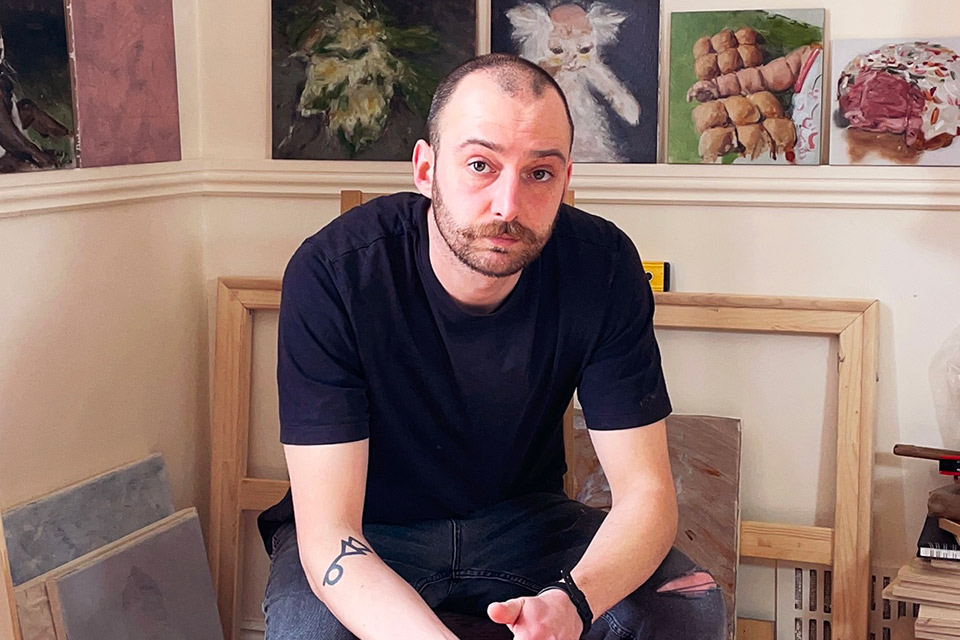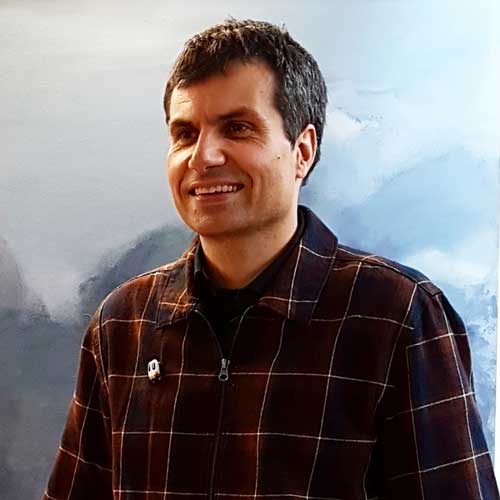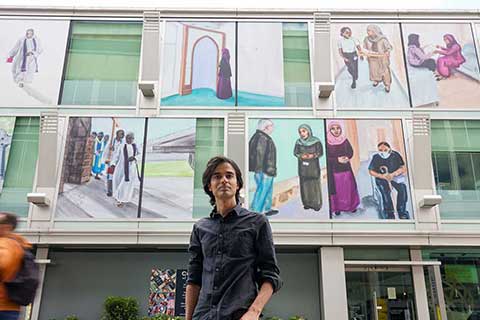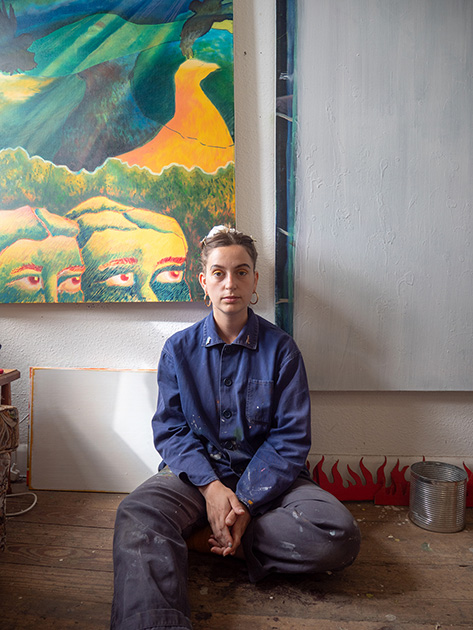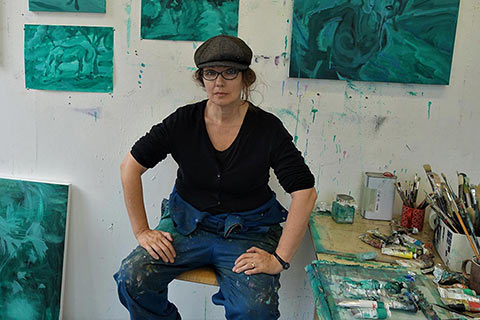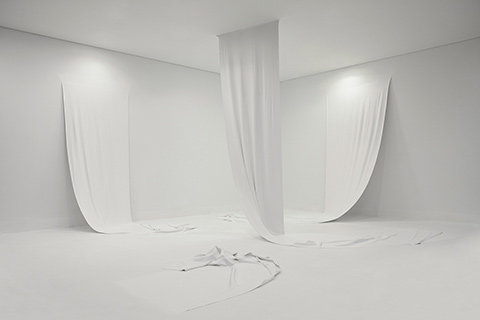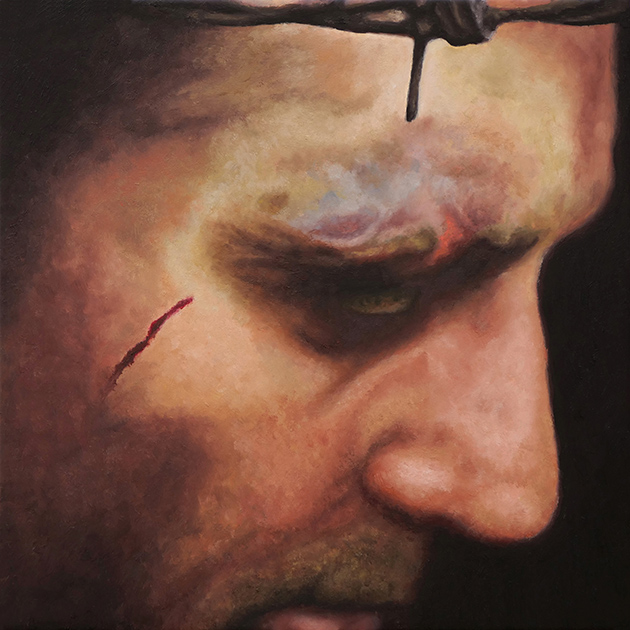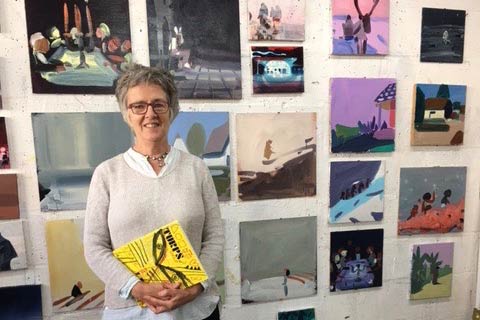Rich Jellyman: Artist of the Month
Artist of the Month November 2024:
Rich Jellyman, selected and interviewed by Paul Newman for CBP.
Rich Jellyman makes paintings that reference internet culture and incorporate technology in the selection of subject matter. Utilising images that display a certain kind of internet sensibility – disposable phone photos, surreal mashups taken from Reddit threads, bad photoshop, memes, AI and video game glitches. His most recent series of paintings are anthropomorphic portraits that use AI image generation software to appropriate likenesses.
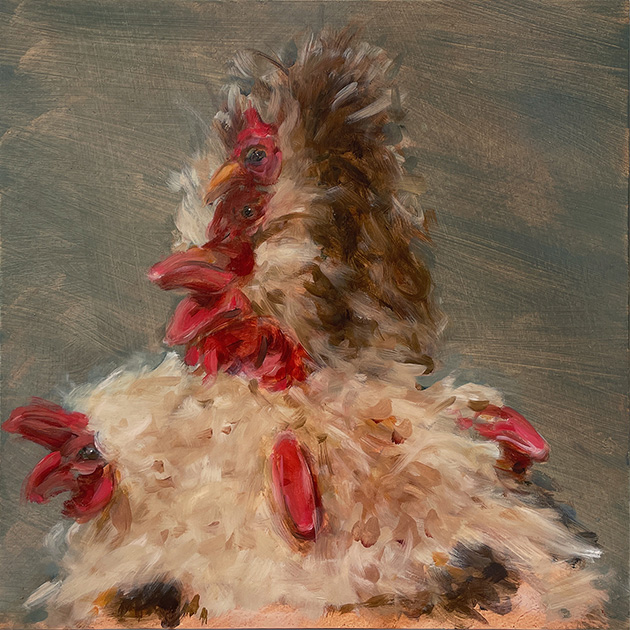
CBP: It’s been 12 months since you won the 2023 Contemporary British Painting prize. How has this year been for you and your practice?
RJ: It’s been great thanks. I’ve managed to set up a proper studio for the first time in about 9 years and settled back in London after having been a bit nomadic since Covid and I guess a while before. Having some consistency since has been the best thing, though initially after winning I think the tendency is to get a little carried away thinking all your problems have been solved but I’ve now returned to a healthy sense of doubt.
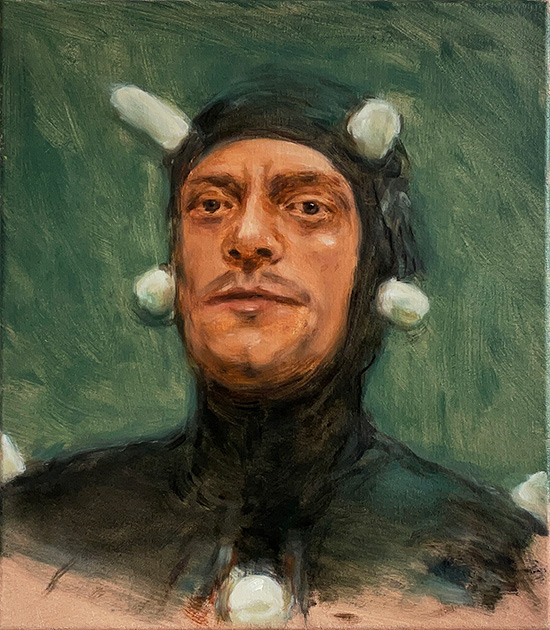
CBP: You are further developing the series that won you the prize. Can you introduce your enigmatic portraits of male characters, in what appear fancy-dress, workers uniforms and animals?
RJ: I kind of feel like most of my favourite art circles back to people, the implication of them, or a human gaze even if the work is fairly abstracted. I guess it must be hardwired into us. So for one ongoing thread of paintings I wanted to keep it simple and just focus on making small three-quarter length portraits but I got stuck on who the portraits should represent, what clothes they wear, small details that end up becoming really weighted the simpler the image becomes, so I started experimenting with giving the models different costumes I hadn’t seen painted before, like sports mascots, PPE, cosplay outfits, fancy dress. The more I worked on the images the more everything became blurred but that’s a result of how I work with source material.
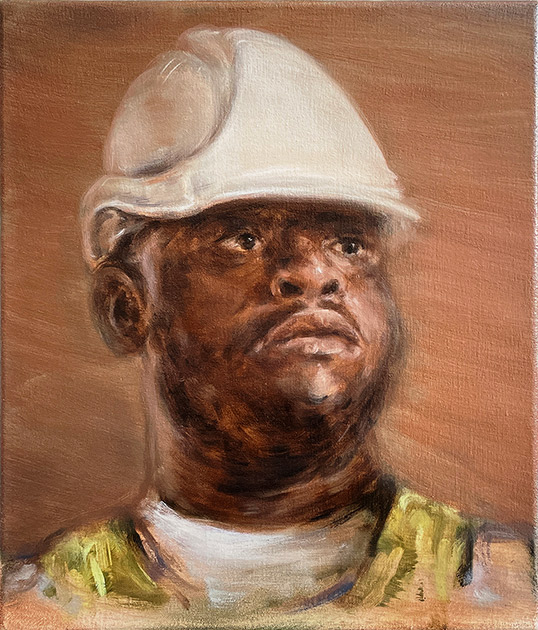
CBP: Where do you take the source imagery of your subjects from?
RJ: It’s a bit of a mess of found images, my own photos and all that mixed-up and then sometimes processed through AI software, so I completely lose track most of the time. I gave up painting in my mid 20s for 5 years on some kind of misguided attempt to become some sort of post-internet artist, I only wanted to make things with a laptop. Even though I’m still fascinated with technology and computers I learnt I couldn’t be working on them all the time, but they’re still a big part of what I do.
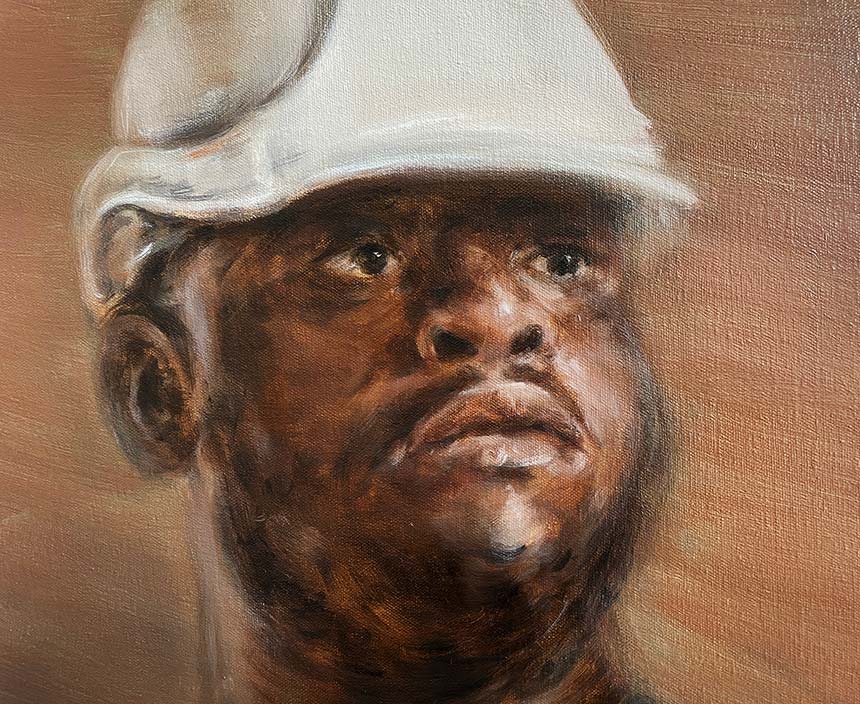
CBP: Can you talk about the notion of becoming animal in your work?
RJ: Again that came from playing with images until the lines started to get blurred, which kind of seemed to feedback on those thoughts about AI, technology and things which feel really analogue like our relationships to animals and anthropomorphic tendencies. I’ve always been inspired by JG Ballard in novels like Crash, he really just seemed to take these ideas and kind of smashed them together until they fit in some weird surreal way, which I don’t think has to be necessarily taken that literally in the end.
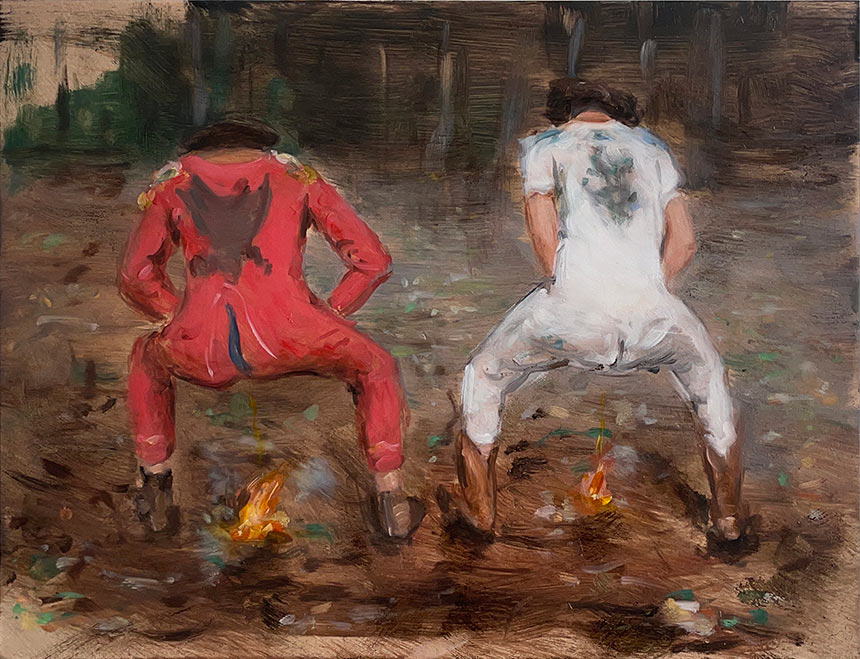
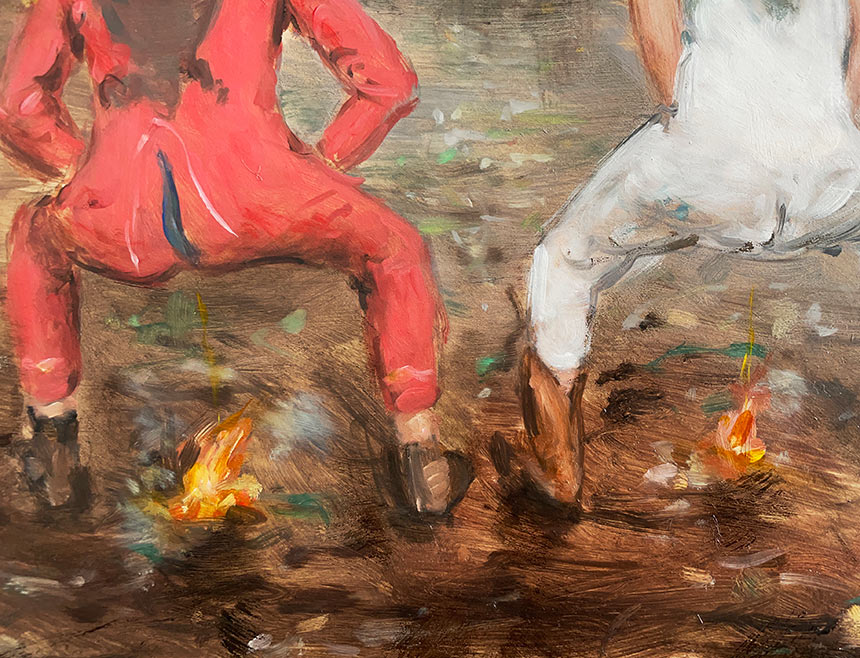
CBP: They adhere to compositional cropping of historical portraiture, and these subjects are also cropped from potential storylines. Can you reveal more about how implied narratives might be changed through the process from source subject to painting?
RJ: I usually find a lot of what I try to paint doesn’t work so I have to start again. Sometimes it’s technical but often it just doesn’t resonate and I usually can’t quite put my finger on why. So often it becomes about trying to find another path to an idea which could be a completely different subject, so the process of painting and failing seems to drive it forward a lot.
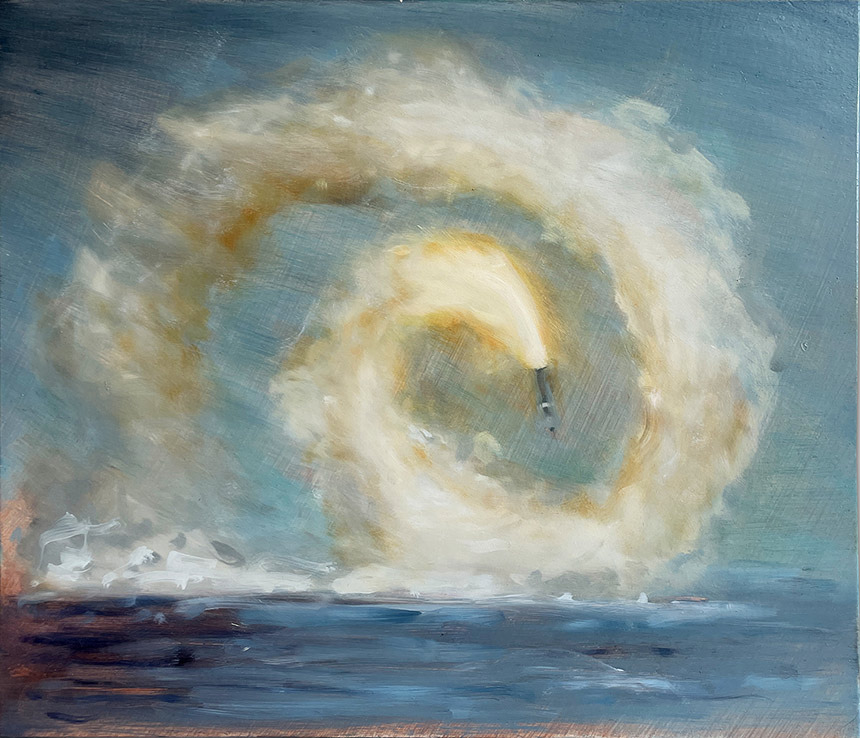
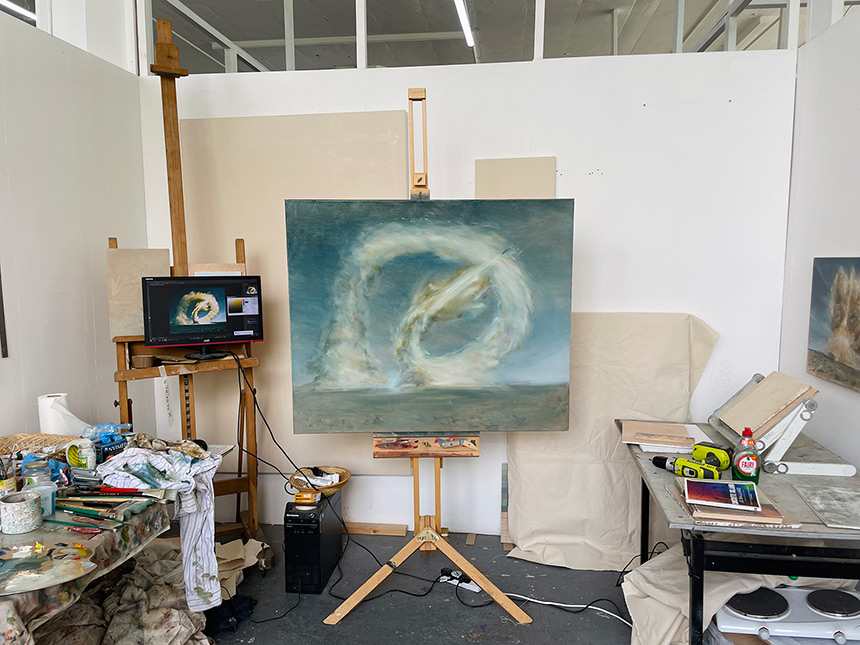
CBP: Images 5-9 break from the portrait and show; a spiralling rocket, a roadkill bird, dead deer and what appears a male bonding fireside ritual, in costume. Can you discuss these works and is there any conceptual thread between them?
RJ: I’ve got a few other threads of images other than portraits I’ve been working on. Sometimes a portrait can come from a completely different image but can be almost like a character from it, but it often works the other way round too. I was temping in a warehouse last year on and off and was working with a guy who was pretty smart, had been a computer programmer before but had fallen down a bit of a rabbit hole with online conspiracy theories over lockdown and I was thinking about him recently. I started making landscapes with chemtrails and then missiles which initially came from some news images I saw but then kind of morphed into these portraits based on this guy I met. I’ve started some portraits of people in tin-foil hats which sounds like I’m making fun of this guy but I’m not. I just want them to be about these different readings of familiar and not so familiar things. I’m still trying to figure them out.
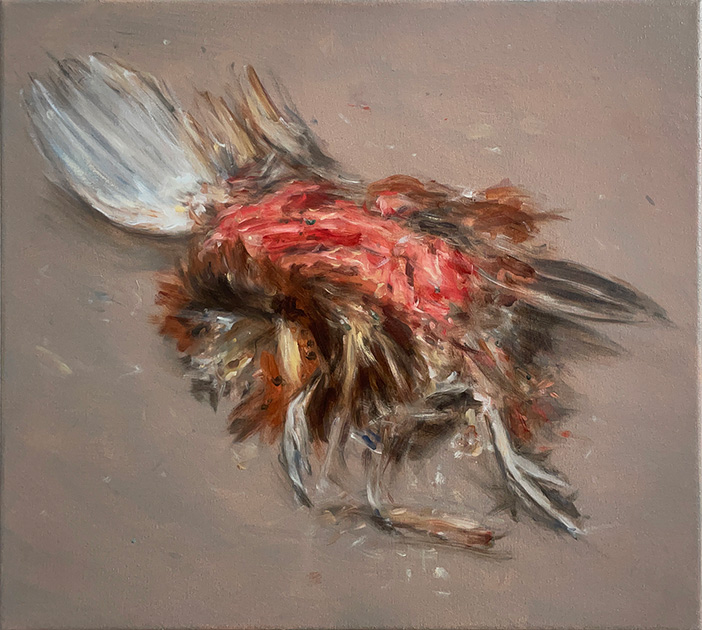
CBP: There is an air of absurdity and maybe humour in some of your painting within a grounding of seriousness. Can you discuss these aspects as intention or a natural intuitive occurrence of the work. I say this because in the past people commented on my own very different practice in these terms, which was never originally intended, but an outcome of sensibilities which subsequently I played on with more purpose.
RJ: I think I’m similar, I never really set out for humour but people have said that about my stuff before. I did paint from a few Memes at one point and I kind of lent into that, but they started to feel a little shallow after a while. I still like a couple of them but I had to stop doing it.
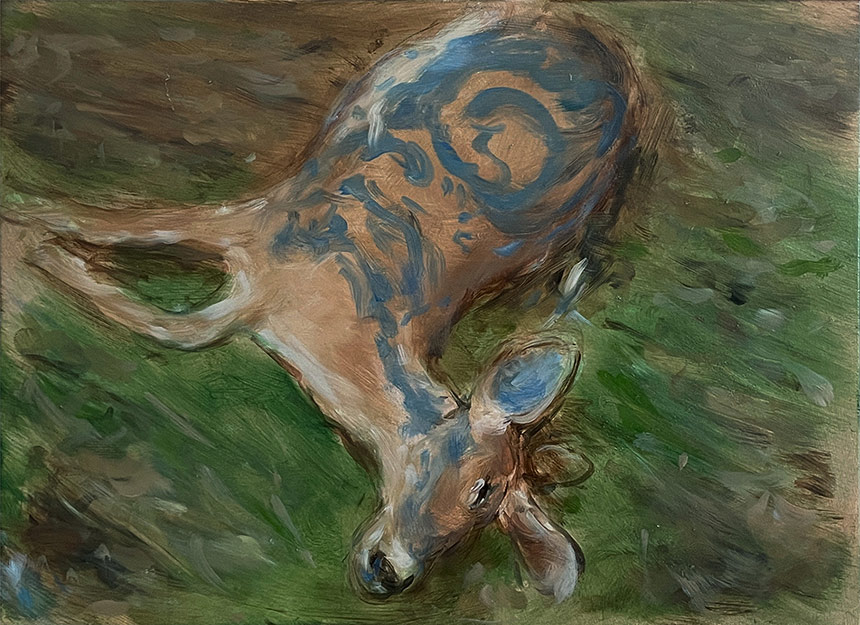
CBP: Your nuanced painting style is like a super refined sketch, evoking a range of influences, for example, the translucency of diagonal brush marks in late Gainsborough to nostalgic 20th c novel cover illustration. Can your talk about your approach to painting?
RJ: I like that idea of a sketch as an end point even if it can seem a bit more resolved visually, the idea that it feels like the test of an idea- maybe that’s quite a good way of putting what I like about some paintings though they’re pretty rare. I think less is often more with painting, or a lot of things I suppose. I throw like 90 percent of things away, or paint over them- I’m getting better at blocking things out and reusing supports to start again. I used to have a thing about having to start completely from scratch but I’m getting better at that. I once worked for an artist who said if anything became too much of a struggle they’d just stop it and do something else. At the time I remember thinking that was such a lazy cop-out but now I’m not so sure, they may have been onto something. It’s best to stay light on your feet and change your approach to something rather than just ploughing your head against the wall.
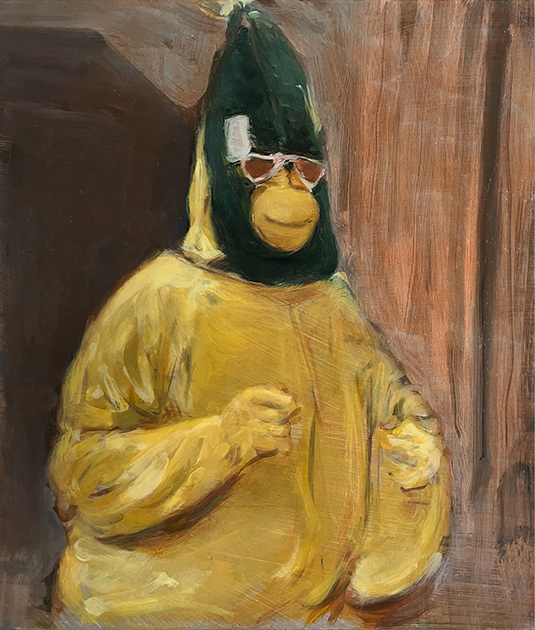
CBP: Can you discuss your painting influences?
RJ: I admire non-painters more than painters usually, maybe because I don’t have the ability to do what they do. I’ve been thinking about photographers with a bit of a conceptual slant recently, more in terms of how what they depict functions within a framework rather than on an aesthetic level. I love Wolfgang Tilmans, Thomas Ruff, Taryn Simon for this. I loved the Mike Kelly that’s at Tate Modern now. Artists that have really changed me at different points: Ygne Holen, Amalia Ulman, Artie Verkant, Constant Dullart, Hito Steyerl. A few painters I’ve thought about recently and love in different ways, in no particular order: Avery Singer, Hogarth, Tala Madani, Michael Borremans, Jenna Gribbon, Agnes Martin, Velazquez. It’s a bit of a boring answer, but if I ever get stuck at painting I have a flick through Gerhard Richter’s website. Everything’s on there and you can search year by year so you can really get a sense of how his relationship to painting developed over his career. It’s an endless source of inspiration.
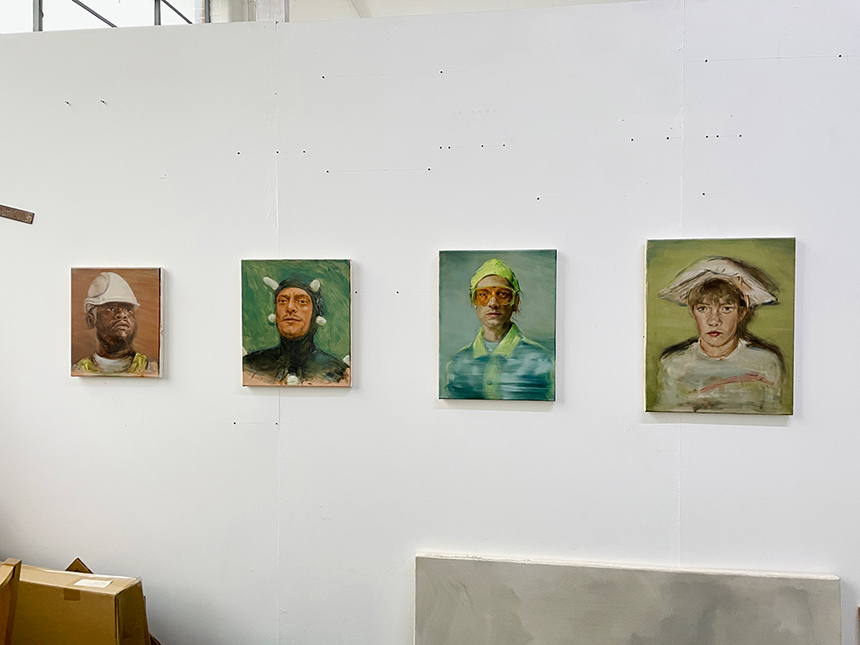
CBP: Describe a typical day or session in your studio.
RJ: If I get a day that’s usually when I do actual ‘painting’ for a few hours, before my concentration starts to slip and I start to make anything I touch worse. Then I tend to switch to image work on the computer, sketching up possible ideas with a bit of underpainting or working on my endless stack of painting supports at different stages of being primed ready to go – that’s also what I usually do if I just have the evening.
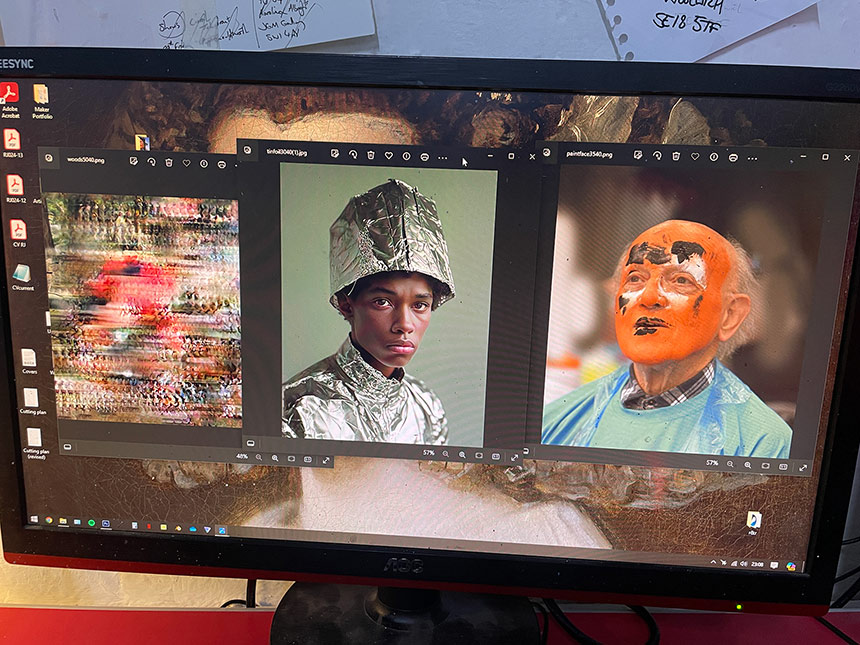
CBP: What projects are you working towards at the moment?
RJ: Just trying to build up a little body of work in the studio, no real shows on the horizon at the moment. I’m slow so I’m just doing me.
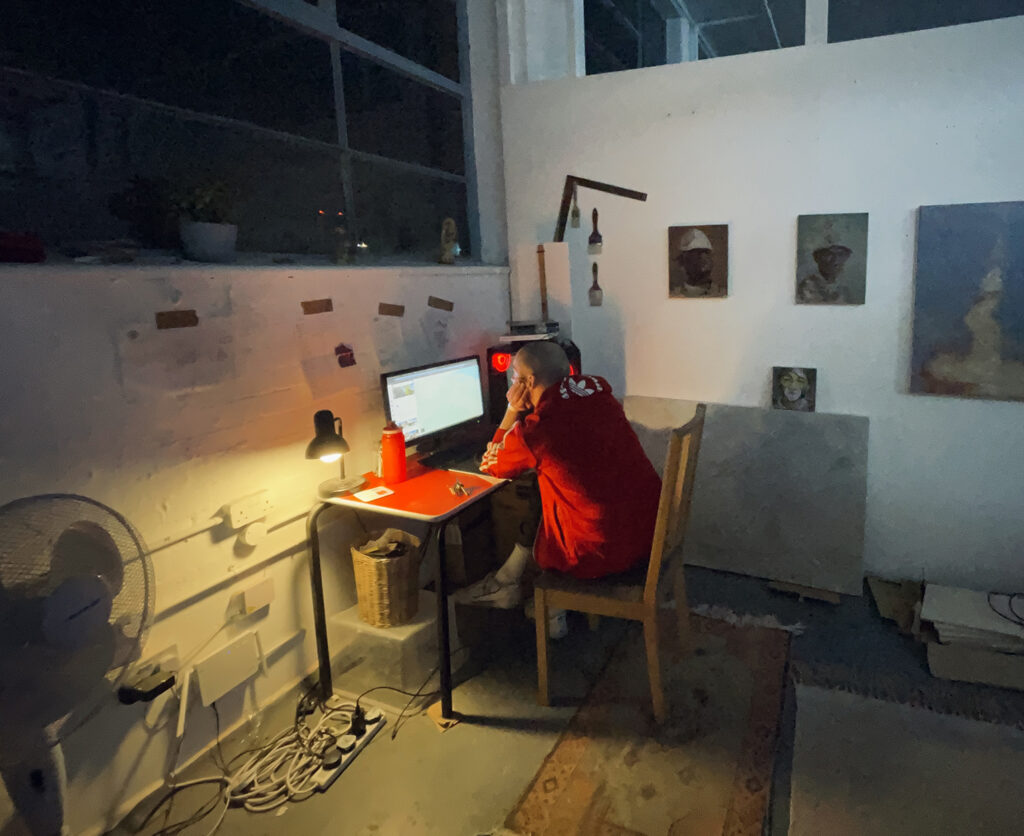
Rich Jellyman was the winner of the Contemporary Painting Prize 2023. Born in 1989 he graduated from the Art University Bournemouth in 2012 and has since lived and worked predominantly in London and Berlin. His work is featured in private collections in the UK and Europe.



